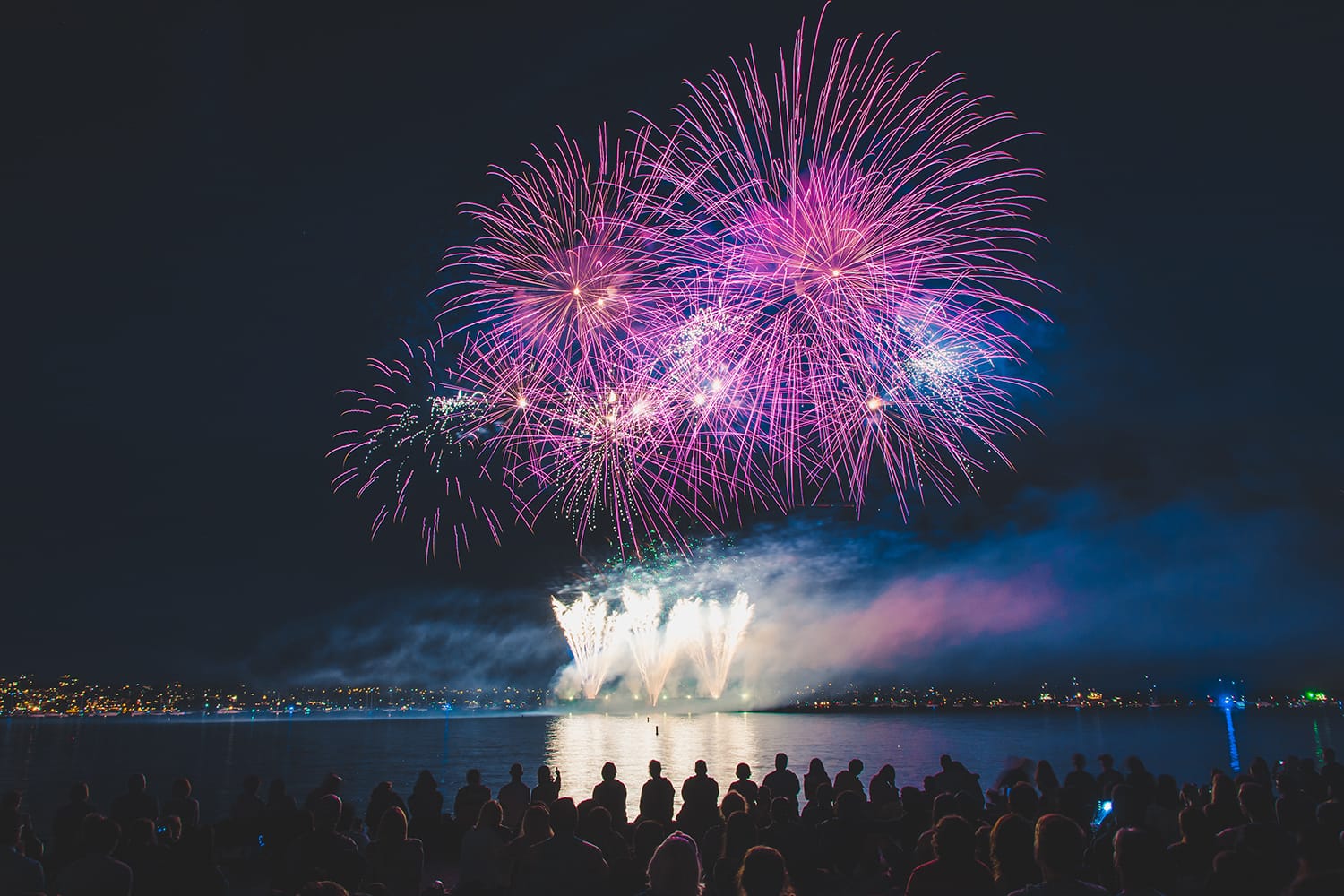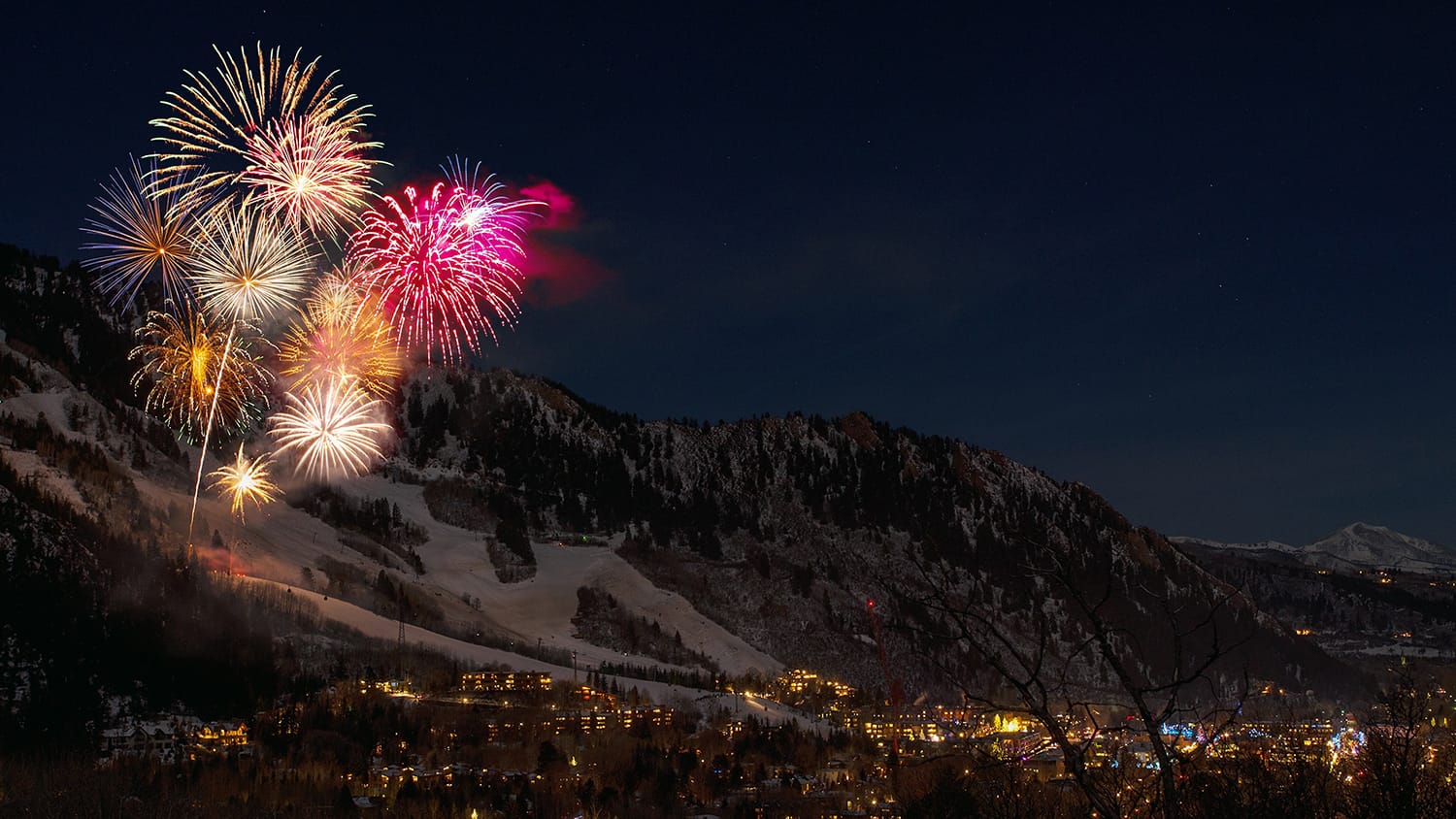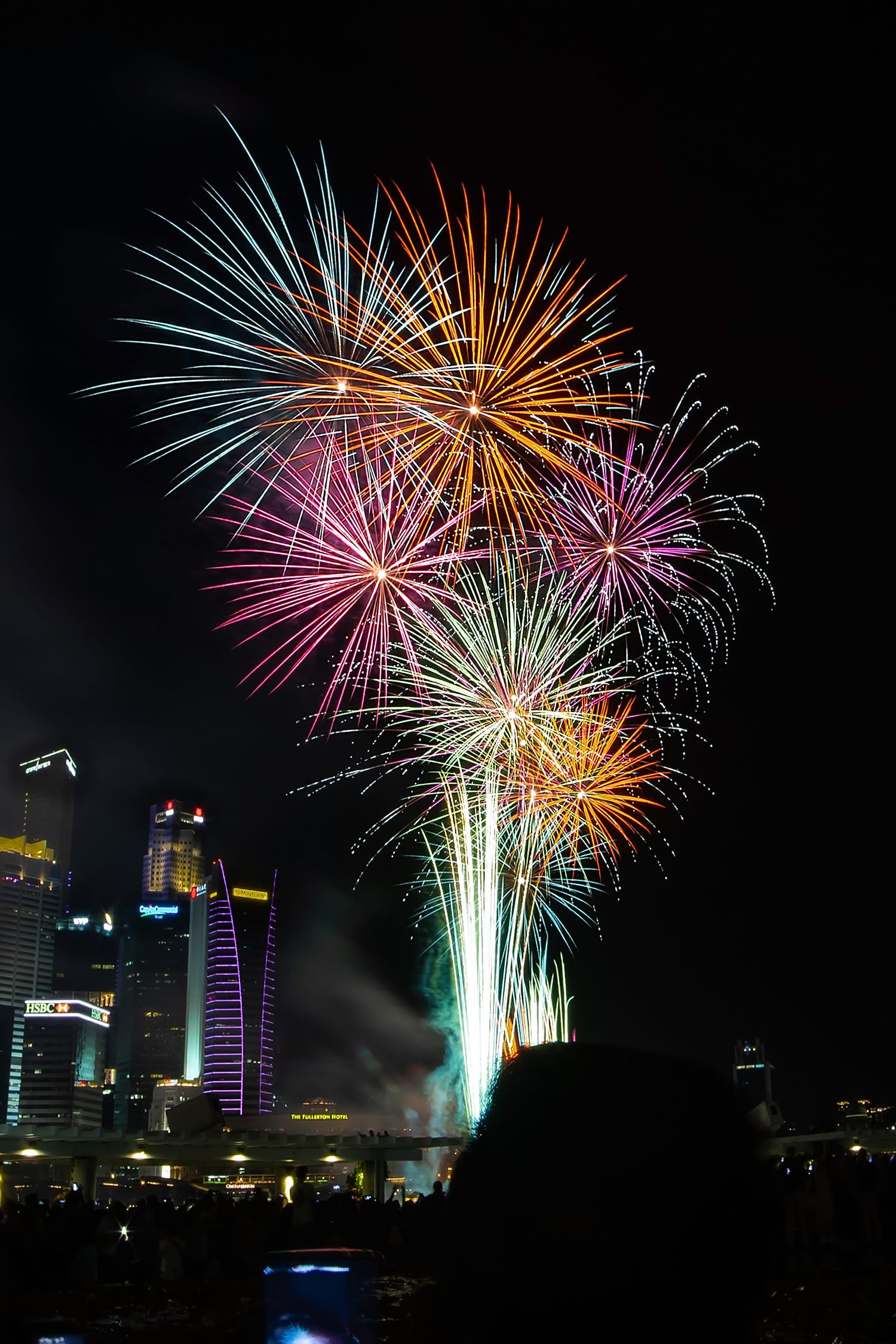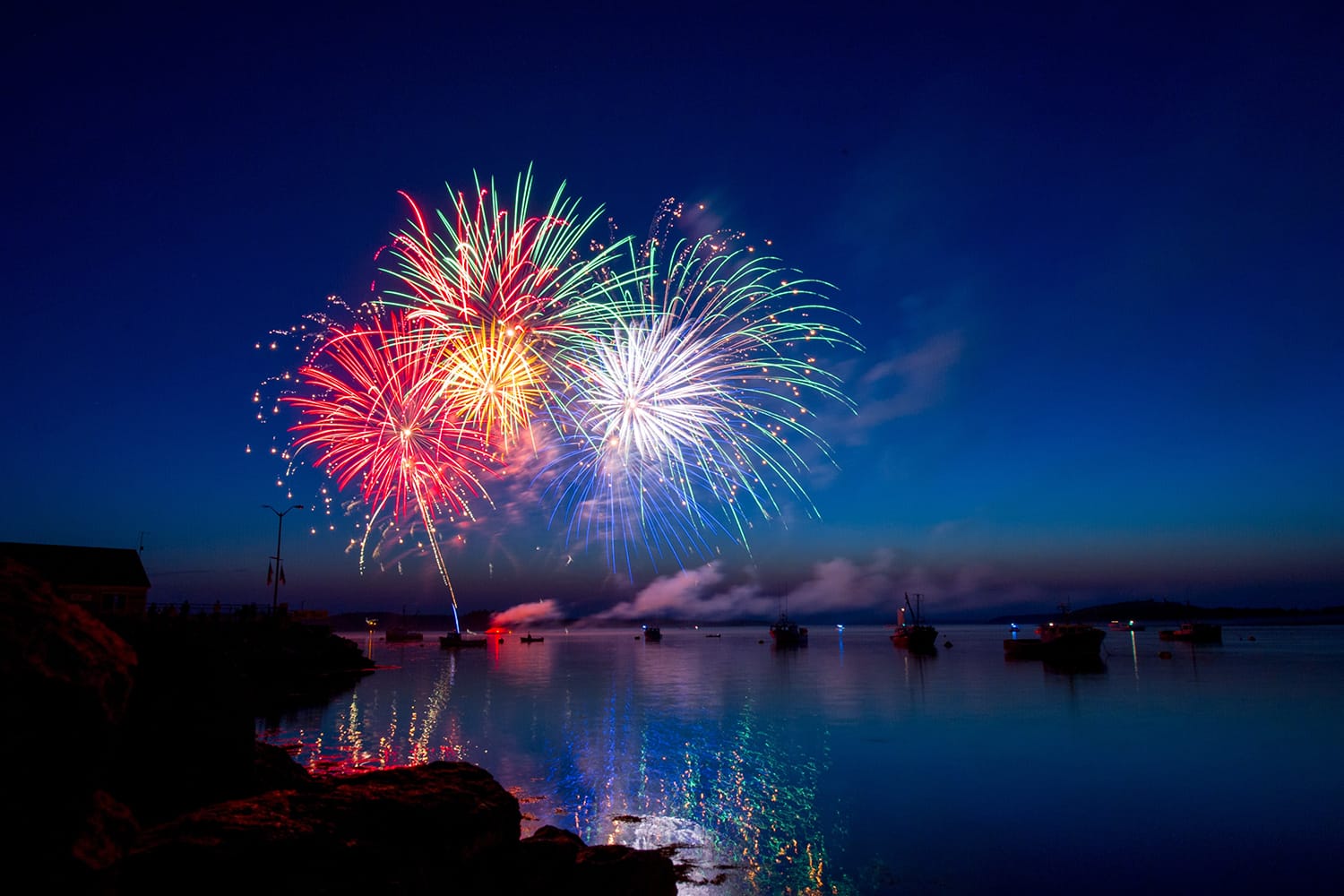The Ultimate Guide to Photographing Fireworks
Given that fireworks photography combines many challenging aspects of photography (such as low lighting and quickly moving subjects), it can be difficult for even experienced photographers.
This is precisely why we’re here to answer your questions about firework photography and provide you with a quick guide you can use right away, so you’ll never miss the opportunity to shoot fireworks again!

A Brief Overview
Before we dive into a more detailed guide to firework photography, make sure that you invest in the proper gear before heading out to photograph fireworks.
There’s nothing worse than seeing the perfect shots happen and being unequipped to immortalize them!
1. Some Necessary Gear
You can put together your firework photography kit by gathering the following items:
- A tripod (and ideally a remote release to further reduce camera shake)
- A flashlight to help you adjust camera settings in the dark (yes, you’ll be using manual mode)
- Spare memory cards
- Wide-angle and telephoto lenses
- A camping chair and blanket for your own comfort

2. Scouting the Location
Then, let’s tackle the next most crucial aspect of fireworks photography – scouting the area.
Beat the crowd by knowing ahead of time exactly where you’ll set up. This may be at a key point among the crowd, or it may be from an alternate vantage point; whatever you choose, plan well before the show starts.
3. Taking the Shots
Shooting fireworks follows many principles of low light photography – taking advantage of manual mode, using a tripod, setting a slow shutter speed, and adjusting the ISO to avoid gain/noise in your shots.
When it comes time to begin taking photographs, though, remember that it’s not just the fireworks you’ll want to shoot!
Capture the essence of your surroundings and the excitement of the crowds by taking some shots of the bigger picture, too. In some cases, you may even be able to find a higher vantage point during your scouting and take a picture down on the crowd, their awed faces lit with the unique colors of the fireworks display. Get creative with it!

Step-by-Step Firework Photography
Ready to get started? Let’s tackle a bit more detail.
-
Work in manual mode.
Even if you’re itching to snap those first shots, wait! Make sure you get the settings just right. Start by putting your camera in manual mode so that you have full control over every aspect of your camera’s settings.
This allows you to maximize your setup to achieve the clearest, brightest, and most artifact-free photographs.
You’ll quickly learn what works best for you after some experimentation, but one suggested starting point for your settings is an ISO of 200 and f/11 for your aperture. Shutter speed may vary, but somewhere between 1 and 4 seconds will serve you well for this kind of photography. Alternatively, use bulb mode to keep the shutter open as long as necessary.
-
Set the focus to perfection.
Because fireworks can be hard to capture in sharp focus, this is one of the most important steps you can take before getting started. Choose a point on the ground, preferably something light, that’s about the same distance away from your camera as the fireworks will be.
Focus on this object manually, or use auto-focus to focus on that singular spot before changing to manual mode and maintaining the focus automatically determined by your camera.
-
Know when to shoot.
Because fireworks are moving objects that allow only a brief window of time for you to work with, keep your eyes on the sky as much as possible. This will allow you to more accurately track the firework’s path and nail the perfect timing to capture the moment of explosion. Plus, this will also greatly benefit your framing.
It may take a few tries to anticipate the right timing, but a general rule of thumb is to try starting the exposure at the peak of a rocket’s trajectory.
-
Check your shots.
There’s no better way to double-check your settings in the field than by peeking at your LCD every once in a while.
After manually dialing in your settings, and taking your first shots, use the image previews to check things like exposure and focus. Then, adjust as necessary. For example, if your photo is too bright, try a smaller aperture. If it’s too dark, try a larger aperture.
However, be careful not to obsess over this too much. There’s no need to double-check every shot. Just keep an eye on how your photos are looking in general.

When you’re in the heat of the moment and aiming to capture the most grandiose fireworks, snapping shots, and waiting with bated breath for the grand finale, don’t sacrifice your balance of imagination and technical skill!
It’s easy to focus so much on the technical aspects of photographing fireworks that you forget entirely to aim for results that scream with creativity.
Likewise, focusing too much on a unique and impactful composition may lead to an abandonment of technical consideration that’s necessary to grab the shot. Achieving this balance during your first firework shoots can be difficult, but keep photographing. Don’t expect every shot to be perfect, and enjoy the celebrations!
